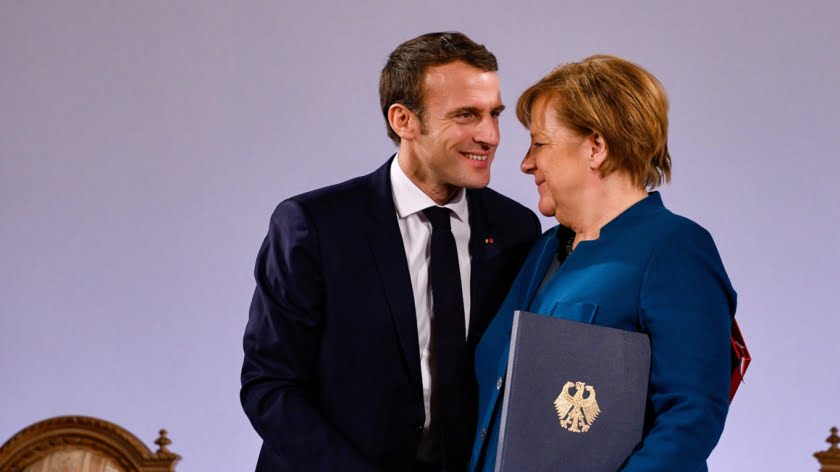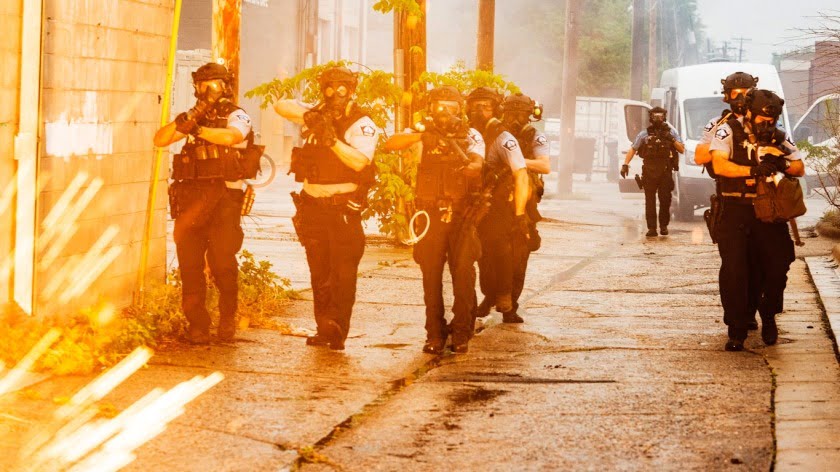US and India Sharing Intelligence on Chinese Submarine and Ship Movements
India and the US are exchanging intelligence on Chinese submarine and ship movements in the Indian Ocean, the head of the US Pacific Command, Admiral Harry Harris, told a press conference in New Delhi last week.
“There is sharing of information regarding Chinese maritime movement in the Indian Ocean,” Harris said, following an address to an Indian government-sponsored security conference.
The Pentagon, continued the admiral, is working “closely with India and with improving India’s capability to do that kind of surveillance.”
The head of the US Pacific Command then referred to the Malabar exercise, a yearly Indo-US naval exercise, which was recently expanded to include Japan as a permanent third partner. “Malabar … helps us hone our ability to track what China is doing in the Indian Ocean. Chinese submarines are clearly an issue and we know they are operating through the region.”
Under Narendra Modi and his Hindu supremacist Bharatiya Janata Party (BJP) government, India has aligned itself ever more closely with Washington’s diplomatic and military-strategic offensive against China. It has parroted US claims that China is an “aggressor” in the South China Sea; enhanced strategic ties with America’s principal Asia-Pacific allies, Japan and Australia; and opened Indian military bases for routine use by US warplanes and battleships.
Harris’ remarks would appear, however, to be the first public admission by either the US or India that their navies are sharing intelligence on Chinese deployments in the Indian Ocean.
With Washington’s support, India is rapidly building a blue-water navy to stake its claim to a leading role in the Indian Ocean, which is home to the world’s busiest shipping lanes, including those that bear Mideast oil and other resources to China and carry Chinese goods to markets in much of Asia, the Middle East, Africa, and Europe.
Harris made mention of the Indian Ocean intelligence sharing following a bellicose address to the second annual Raisina Dialogue in which he celebrated the burgeoning Indo-US military-security partnership and emphasized the Pentagon’s wish for it become ever-more comprehensive.
Admiral Harris told the inaugural Raisina Conference, held in March 2016, that he looked forward to the day when Indian and American warships would jointly patrol the Indian and Pacific Oceans, including the South China Sea.
At last week’s conference he said that India and the US must work together to “shape” “the new normal” in the “Indo-Asia-Pacific” region so as to prevent it being shaped “by a revanchist Russia and an increasingly assertive China.”
He then likened Indo-US military-security cooperation to the sharpening of a war axe.
Harris claimed that Abraham Lincoln’s adage “Give me six hours to chop down a tree and I’ll spend the first four sharpening the axe” encapsulates the current purpose and posture of the Indo-US partnership.
“The tasks before us,” he declared, “are to shape the New Normal and uphold the rules-based international order [that is, US imperialist hegemony in the Indo-Pacific] … These are huge tasks, but not insurmountable ones. Our approach, by taking the time to work together—to sharpen our tools—is, in my opinion, the right approach.”
To make sure his meaning was not lost on his audience, Harris said the US military is ready to confront its adversaries “where we must,” adding that he would like “to sharpen our proverbial axe faster,” and make it “razor sharp,” “because we never know when events will force us to use it.”
At his press conference Harris said he has met Trump’s security team and is confident the new administration will continue the bipartisan policy toward India that the US political elite has pursued since the final years of the Clinton administration. This policy aims to build up India as a strategic counterweight to China and has crystalized, in this decade, into a drive to transform India into a frontline state in the US effort to thwart China’s “rise,” if necessary through war.
Toward this end, Washington has whetted the Indian bourgeoisie’s great power ambitions. Successive US administrations have declared India a “global strategic partner” and showered New Delhi with strategic favours. Last year, Washington named India a “Major Defense Partner,” so as to give it access to the most advanced weapons and weapons systems—those the US will sell only to its closest treaty allies.
Although Pakistan does not fall under Harris’ jurisdiction under the Pentagon’s command structure, he expressed concern at his press conference about the strengthening of China’s longstanding military-security ties with Pakistan. Needless to say, he did not mention that these enhanced ties are very much a response to the Indo-US alliance.
“The relationship between China and Pakistan is of concern,” said Harris. Indeed, he urged India to be “concerned about increasing Chinese influence” across South Asia. “If you believe that there is only finite influence, then whatever influence China has means that influence India does not have.”
New Delhi is already immersed in fractious strategic competition with China throughout South Asia and among the Indian Ocean islands states, from Nepal and Bangladesh to Sri Lanka, Mauritius, and the Maldives.
Nevertheless, Harris’ injunction to India to beware of Chinese influence in Pakistan will be music to the ears of the Modi government. It has been pursuing a hardline policy against Pakistan that brought South Asia’s nuclear-armed rivals to the brink of all-out war in October-November 2016.
While India and Pakistan are no longer exchanging daily artillery barrages across the Line of Control that separates Indian- and Pakistani-controlled Kashmir, their 2003 truce has manifestly collapsed and the Modi government’s threat to mount further cross-border military raids into Pakistan has left the region on tenterhooks.
Prime Minister Modi and his ministers continue to insist they will not resume any form of dialogue with Islamabad until Pakistan demonstrably heels to India’s demand it stop all logistical support to the anti-Indian insurgency in Kashmir.
Modi reiterated this stance in his speech to the Raisina Dialogue. When it came to China, however, his tone was quite different from that of the US Admiral Harris. India’s prime minister claimed that “the development of India and China” represents “an unprecedented opportunity, for our two countries and for the whole world.” He then cautioned that both “countries need to show sensitivity and respect for each other’s core concerns and interests.”
Modi has frequently combined conciliatory rhetoric vis-a-vis China, with provocative actions.
In recent weeks, India has tested an intermediate and an intercontinental ballistic missile, respectively the Agni IV and Agni V—weapons developed with the express purpose of ensuring that all China’s major population centers could be targeted for nuclear annihilation in the event of a Sino-Indian war.
And just days after assuming his command, India’s new army chief, General Bipin Rawat boasted about the Indian military’s readiness to fight a “two-front” war against Pakistan and China simultaneously.
By Keith Jones
Source: World Socialist Web Site







